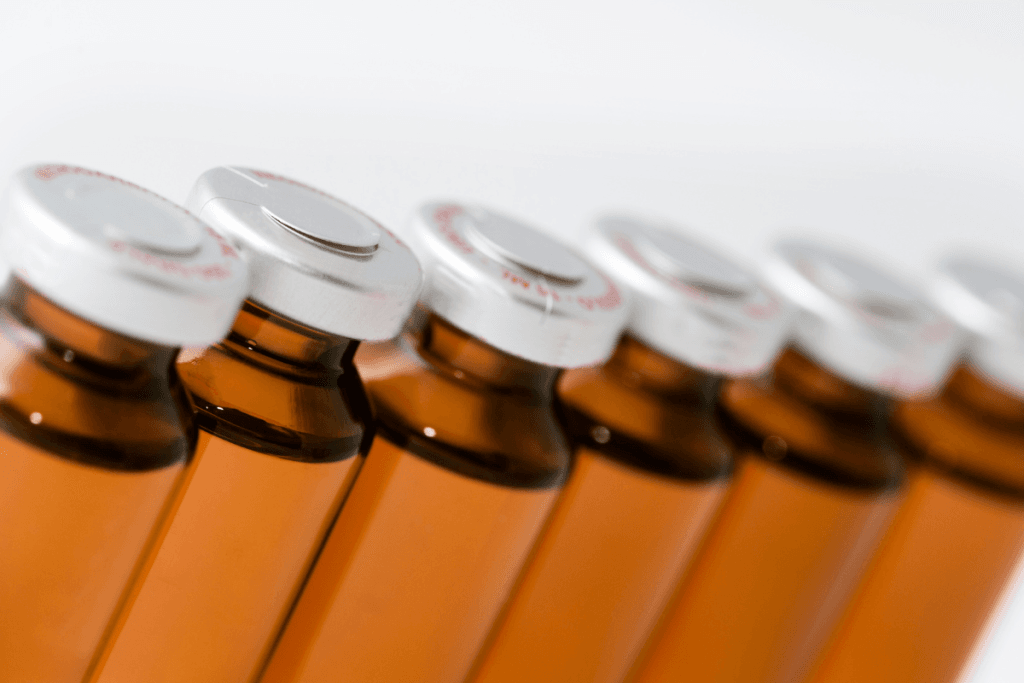When lifestyle changes like diet and exercise don’t fully achieve the desired fat reduction, medical professionals often turn to advanced therapies. Research highlights the role of Phosphatidylcholine in non-surgical body contouring, with clinical studies demonstrating its ability to safely target localized fat deposits. As interest in injectable treatments grows, understanding Phosphatidylcholine benefits becomes increasingly important for practitioners offering aesthetic and metabolic care.
This article explores the science, applications, and clinical relevance of Phosphatidylcholine, helping healthcare professionals make informed decisions about incorporating it into patient treatment plans.
Understanding Phosphatidylcholine
Phosphatidylcholine is a naturally occurring phospholipid and a major component of cell membranes. It plays a role in maintaining cell structure, facilitating lipid metabolism, and supporting liver health. In injectable form, it has gained prominence in aesthetic medicine for its ability to break down fat cells and improve body contours without the need for invasive procedures.
This compound is not a synthetic novelty, it is already part of the human body, which helps explain its tolerability in therapeutic use. Clinicians often describe it as a versatile tool because it combines biological compatibility with targeted fat-dissolving activity.
Key Benefits of Phosphatidylcholine
For professionals considering its application, Phosphatidylcholine benefits extend beyond cosmetic improvements. Its effects can be grouped into four primary categories:
Fat Reduction
By emulsifying lipids, Phosphatidylcholine effectively disrupts fat cell membranes and promotes their gradual breakdown, leading to a measurable and noticeable reduction in localized fat deposits. This process can help individuals achieve a more contoured appearance in targeted areas.
Metabolic Support
Phosphatidylcholine contributes to lipid metabolism and can significantly complement treatments for patients dealing with metabolic dysfunctions linked to abnormal fat distribution. This can be particularly valuable for individuals looking to improve their overall metabolic health.
Skin Contouring
Beyond fat loss, patients often report smoother contours and enhanced skin texture following multiple treatment cycles. The improvement in skin quality can be an important factor in boosting patient self-esteem and overall satisfaction with cosmetic outcomes.
Adjunctive Therapy
In some cases, Phosphatidylcholine is combined with other aesthetic or metabolic interventions, serving effectively as part of a broader treatment protocol. This integrative approach enhances the overall effectiveness of the therapy and addresses multiple concerns in a cohesive manner.
These numerous benefits illustrate why Phosphatidylcholine is widely used across both aesthetic medicine and clinical practice, effectively bridging the essential gap between cosmetic enhancement and improved metabolic health. Its versatility and efficacy make it a valuable tool for professionals in the field.
Mechanism of Action: How It Works
Phosphatidylcholine injections work by breaking down fat cells through a process called lipolysis. The compound integrates into adipocyte membranes, destabilizing their structure. Once disrupted, the fat stored inside is released, metabolized by the liver, and naturally eliminated.
The Phosphatidylcholine function is particularly valuable for small, resistant fat pockets, areas that do not respond well to traditional diet and exercise strategies. For patients, the outcome is a gradual reshaping of contours without surgery, while for practitioners, it offers a reliable, reproducible method of localized fat reduction.
Clinical Applications in Aesthetic Practice
Medical professionals integrate Phosphatidylcholine into a variety of treatment plans. Common application areas include:
- Submental fat (double chin)
- Lower abdomen
- Flanks and hips
- Thighs
- Upper arms
These are regions where stubborn fat deposits often remain despite weight management strategies. In practice, clinicians may recommend a series of sessions spaced several weeks apart to achieve optimal results.
The adaptability of this therapy also extends to different patient demographics. Some seek mild contour improvements, while others require more substantial reshaping. For both groups, Phosphatidylcholine offers a middle ground between conservative lifestyle interventions and invasive surgery.
Phosphatidylcholine Before and After: What to Expect
Patients seeking contouring often want to understand what changes they might see from treatment. Documented Phosphatidylcholine before and after results generally show:
- Gradual reduction in localized fat bulges.
- Smoother body contours over time.
- Visible improvement within 3–6 weeks, with optimal results after multiple sessions.
- Minimal downtime compared to surgery, though mild swelling or bruising may occur.
Before-and-after photos are an effective tool for practitioners to illustrate realistic expectations and outcomes.
Evidence Supporting Fat Reduction
Studies evaluating Phosphatidylcholine injections consistently show measurable fat reduction with relatively low complication rates. Clinical evidence indicates:
- Visible reduction of fat thickness after multiple treatments
- Sustained improvements lasting several months to over a year
- Enhanced patient satisfaction compared to conservative measures alone
While results vary by treatment area and patient physiology, the reproducibility of outcomes has made Phosphatidylcholine a respected option in body contouring practices.
Safety Profile and Side Effects
Like all injectable treatments, Phosphatidylcholine has risks that practitioners must discuss with patients. Reported Phosphatidylcholine side effects are generally mild and include:
- Swelling and redness at injection sites
- Localized discomfort or tenderness
- Temporary bruising
More severe complications are rare but can occur if protocols are not carefully followed. This underscores the importance of practitioner training, appropriate patient selection, and adherence to dosage guidelines.
Healthcare professionals must also set realistic expectations, clarifying that results are gradual and vary across patients.
Integration With Other Therapies
Phosphatidylcholine is frequently used alongside other modalities, enhancing its clinical value. Examples include:
- Mesotherapy Treatments – This approach combines Phosphatidylcholine with deoxycholate or specific vitamins for improved fat dissolution and a more effective fat reduction process.
- Skin tightening treatments – By pairing fat reduction techniques with advanced methods such as radiofrequency or ultrasound, practitioners can better maintain skin elasticity and promote overall skin rejuvenation.
- Lifestyle support – Integrating comprehensive nutritional counseling or tailored exercise recommendations not only helps in achieving short-term results but also plays a crucial role
This multidisciplinary approach not only facilitates a more holistic treatment plan but also empowers physicians to achieve better long-term outcomes for their patients, ultimately leading to enhanced satisfaction and improved overall health.
Phosphatidylcholine in Weight Management
Although primarily used for localized fat reduction, there is growing interest in Phosphatidylcholine weight loss. While it should not be considered a substitute for systemic weight management, its role in reducing localized fat can support overall body image improvement, which motivates patients to sustain lifestyle changes.
Professionals should position it as a complementary therapy, effective for reshaping contours, not as a primary treatment for obesity.
Practical Considerations for Practitioners
For clinicians evaluating Phosphatidylcholine therapy, key considerations include:
- Patient Selection – Ideal candidates are those with localized fat resistant to diet and exercise.
- Treatment Protocols – Multiple sessions, typically 2–6, spaced apart, provide optimal outcomes.
- Dosage Accuracy – Proper dilution and injection technique minimize risks.
- Clinical Setting – Treatments should always be conducted in a medical environment under professional supervision.
By adhering to these principles, practitioners ensure both efficacy and safety in practice.
Market Relevance and Accessibility
With rising demand for non-invasive contouring, Phosphatidylcholine remains a sought-after treatment. Clinics considering integration should also note the availability of professional-grade products through licensed distributors. The growing popularity highlights the need for clinics to maintain access to high-quality formulations, balancing efficacy with affordability for patients.
Purchasing Phosphatidylcholine injections wholesale online offers clinics a strategic advantage in managing costs and inventory. By buying in bulk, clinics can benefit from better pricing and ensure they have a sufficient supply to meet patient needs. It’s crucial to select reputable suppliers that guarantee product quality and compliance.
For more details on our offerings, visit our Phosphatidylcholine page for more information on how to streamline your purchasing process and enhance your clinic’s services.
Takeaways
For healthcare professionals, understanding Phosphatidylcholine benefits is key to offering patients non-surgical solutions for body contouring. Its mechanism targets fat cells and promotes their gradual breakdown, providing a clinically supported, safe, and effective option.
Beyond cosmetic outcomes, Phosphatidylcholine supports metabolic processes, making it a versatile tool in aesthetic and wellness practices. By combining evidence-based protocols with proper patient selection, practitioners can deliver visible, lasting results that align with patient expectations.
Frequently Asked Questions (FAQs)
What is Phosphatidylcholine?
Phosphatidylcholine is a crucial phospholipid naturally present in the human body. It plays an essential role in maintaining cell structure, facilitating membrane integrity, and supporting lipid metabolism. In clinical applications, it is often utilized in injections to effectively break down localized fat deposits, particularly in areas of stubborn fat.
What are the Phosphatidylcholine’s main benefits?
The benefits of Phosphatidylcholine include significant fat reduction, body contouring, enhanced metabolic support, and an overall smoother appearance of the skin. Many people appreciate these effects as they contribute to a more toned and youthful look.
How effective is Phosphatidylcholine?
Patients typically notice gradual fat reduction over several weeks following treatment, with improvements in body contour often becoming visible after multiple sessions. This gradual process encourages patience, as the results can create a more natural transition.
Are there any side effects?
Yes, while most side effects are mild and may include redness, swelling, or tenderness at the injection site, serious complications are rare when the procedure is administered correctly by a qualified professional. Be sure to talk with your healthcare provider about any concerns you may have.
Can Phosphatidylcholine help with weight loss?
While Phosphatidylcholine can contribute to localized fat reduction, it is important to note that this treatment should not be considered a replacement for comprehensive lifestyle-based or systemic weight-loss programs. Instead, it can be an effective complement to those efforts, enhancing overall results.






